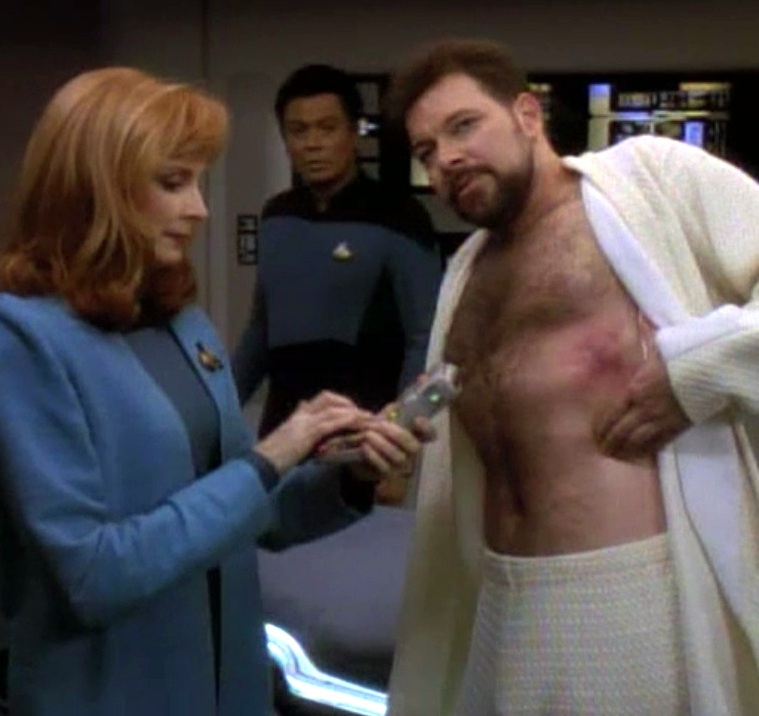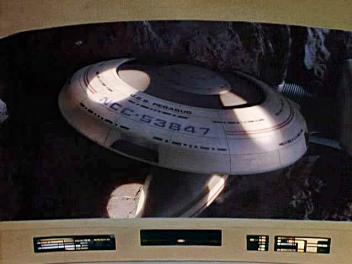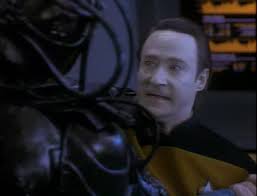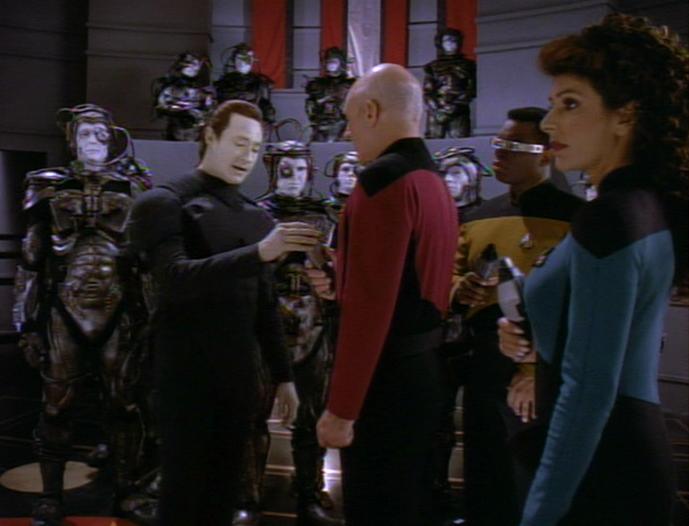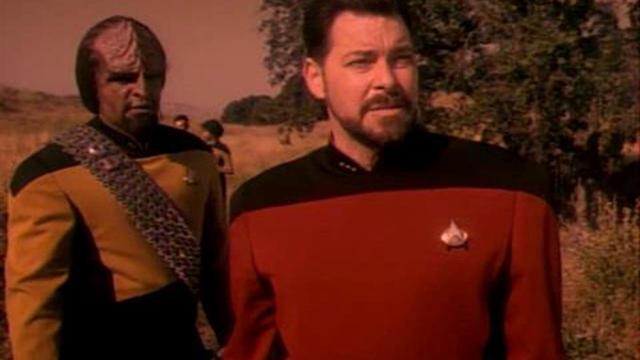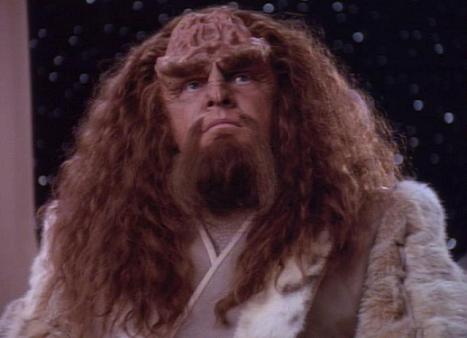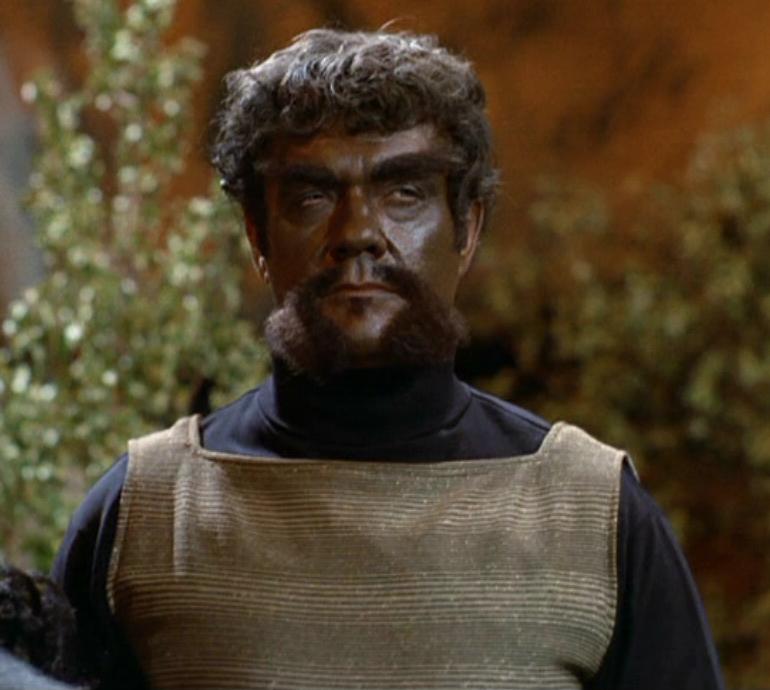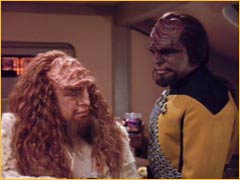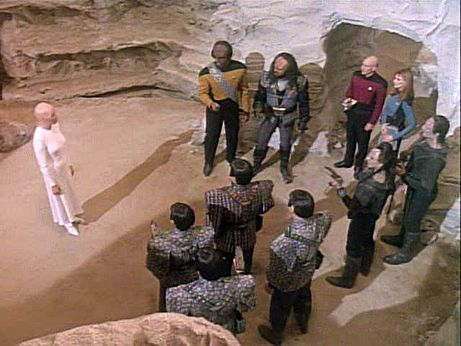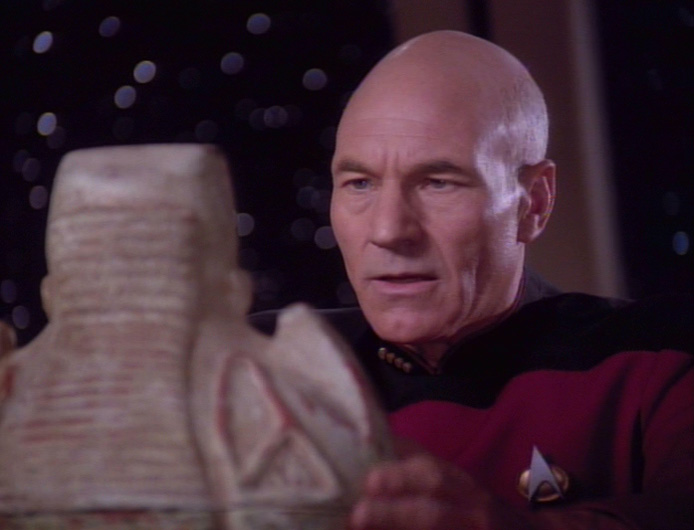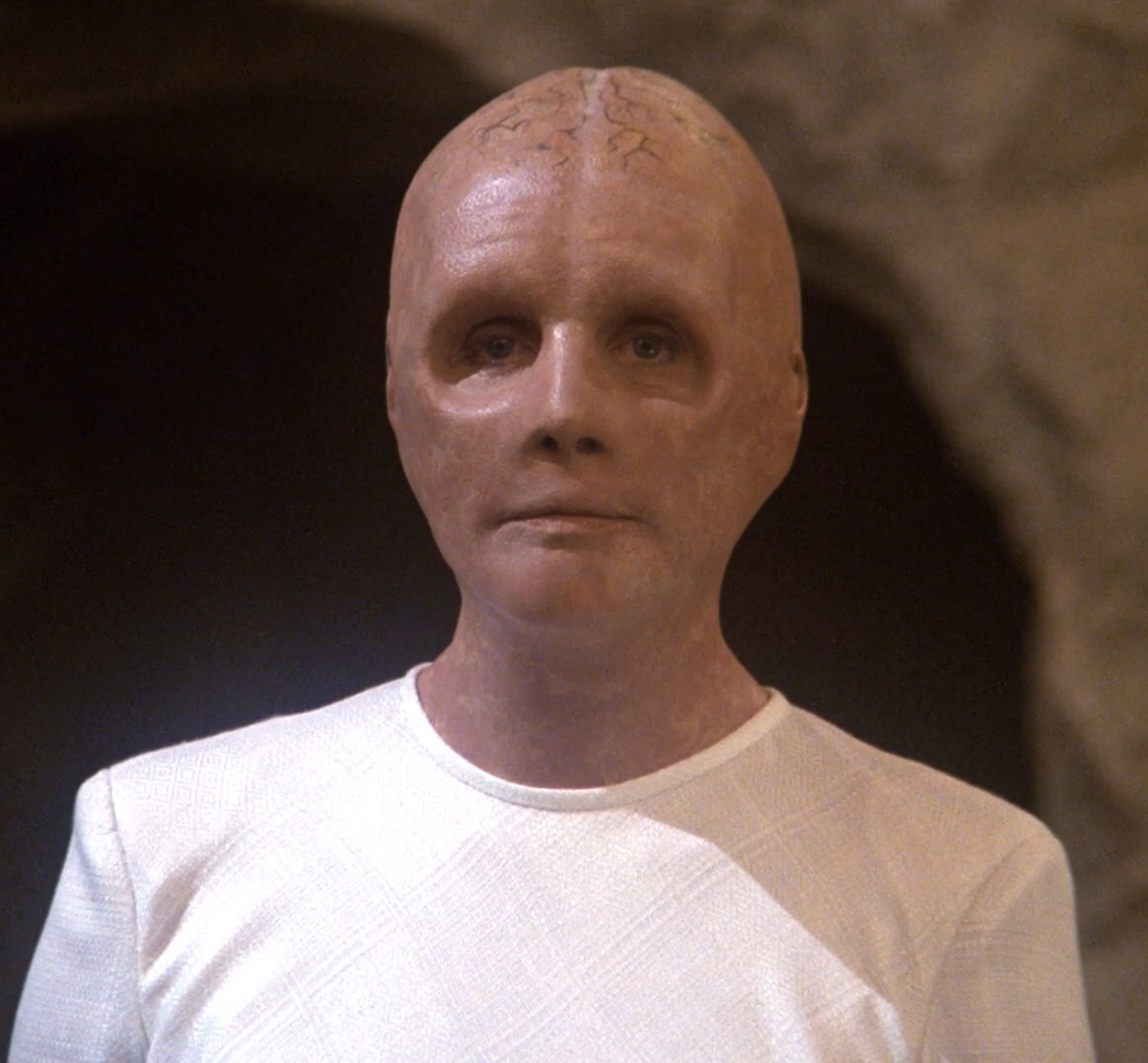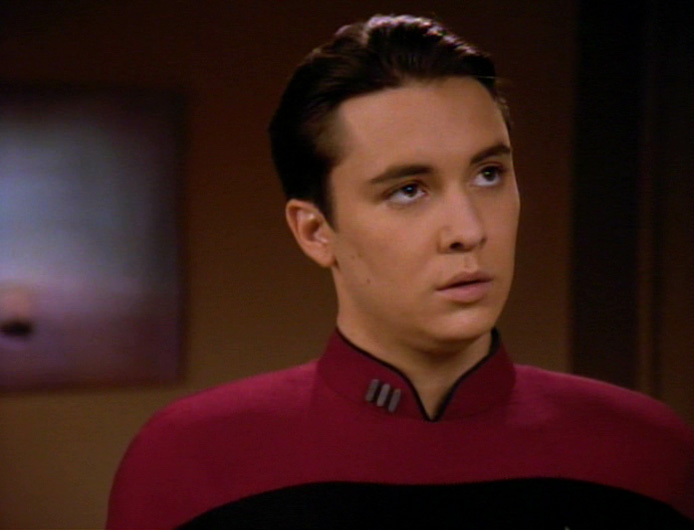
Wesley returns, and he’s really whiny. Meanwhile, the Enterprise must relocate some colonists from Dorvan V, a planet that will soon be in Cardassian space as part of the new treaty with the Federation. The colonists are a group of American Indians who are unwilling to leave the planet — and Picard notes the disturbing historical connection. Wesley beams to the planet and goes on a vision quest (or something) and meets up with the Traveler (from way back in “Where No One Has Gone Before”) who tells him he’s ready to explore new plains of existence. Meanwhile, Picard works it out so the colonists can stay on the planet under Cardassian rule. Wesley resigns from Starfleet and stays on the planet to begin his journey.

Why it’s important
Although they didn’t appear in Trek for a few more weeks — on “The Maquis” two-parter, on DS9, which we’ll eventually review — this episode lays the foundation for the Maquis. The situation stemming from the treaty between the Cardassians and the Federation leads to the formation of the Maquis terrorist group. In fact, Dorvan V is the home planet of Commander Chakotay, who led the Maquis ship that was swept into the Delta Quadrant in Voyager. Chakotay would become first officer of that ship.
It’s kind of cool that TNG and DS9 coordinated these storylines in TNG’s seventh season and DS9’s second. After “Journey’s End” and “The Maquis” two-parter, the second-to-last episode of TNG was “Preemptive Strike”, in which Ensign Ro (Michelle Forbes) returns and goes undercover to stop the Maquis. We won’t review that episode as it didn’t really advance the Maquis storyline — but it’s definitely worth a watch.
Of course, this episode is probably most remembered for the departure of Wesley Crusher, who hadn’t been a regular on the series since season four. Wesley was the most reviled character on TNG — aside from perhaps Dr. Pulaski — but I never really understood the hate. He was painful in the first season at times, but every character was at least once or twice in early TNG (watch Riker in “Deja Q” or Picard in “Code of Honor”). Some have argued that the series got better after Wesley left, but the series had already gotten a lot better in the third season.

What doesn’t hold up
I know the Wesley/Traveler thread had been around since the first season, and it certainly wasn’t a bad thing to bring the Traveler (Eric Menyuk) back in this episode. But way back in “Where No One Has Gone Before”, the Traveler saw a special sort of genius in Wesley in regards to engineering, mechanics and the Enterprise specifically. It’s never made a lot of sense that Wesley, in this episode, is written as some sort of super human, who can literally PAUSE reality. Or, that after exploring new realms of existence (or whatever) that he shows up in a Starfleet uniform for Riker and Troi’s wedding in “Star Trek: Nemesis”.
Beyond that, the Wesley storyline connected to the Dorvan V storyline is a weird combo. It’s not exactly a misfire (though it does sort of push Wesley into the “new realms” thing). The two plots overlap when Wesley tells the Native Americans that Worf is leading a security team to remove them. But Wesley’s involvement there really wasn’t necessary. And it’s not as if what he sees on Dorvan V pushes him out of Starfleet. At best, it accelerated a decision that was already pretty likely.
Finally, I’m amazed at how much the Federation bent over backwards to maintain peace with the Cardassians. And I’ve got to wonder what happened to the Native Americans on Dorvan V a few years later when Cardassia joined the Dominion. I can’t imagine it was anything good.
Final thoughts
This is an incredibly average episode. The acting is good and the characters are written appropriately (Patrick Stewart was so at home as Picard at this point in TNG that he could make almost any episode work). I honestly don’t have a ton of thoughts about it — other than the fact that it’s another instance of the Riker Marginalization that we see in the later seasons. He’s just not on screen very much.
In seasons one and two, Riker was almost a surrogate father to Wesley. Wesley told him about his hopes and dreams and got advice from him about being a leader and about women. As Wesley got older, the surrogate father became Picard — and that’s totally fine.
But it’s odd that we don’t see more interactions between Riker and Wesley in the episodes in which Wesley appears in later seasons. In “The Game”, Riker was under the influence of mind control, so I can shrug that off. But why Riker isn’t around Wesley at all in this episode or “The First Duty”? The scene at the beginning of this episode where Geordi and Data come to greet Wesley was fine, but that was an instance where Riker’s presence would have made sense. The two were very close, and Riker’s interactions with Wesley in late-series episodes are almost nonexistent.
Regular readers might think I have some sort of man crush on Riker, given how much I complain about his lesser role as the series went on. I’m actually not that big of a fan of the character — but it’s odd to me how much he moved to the sidelines. He was, initially, the co-star of TNG. But after a while, he basically takes on the role of Scotty in TOS — running the ship as Picard and Data play Kirk and Spock with all the adventures. Given that no other actors who played first officers (Nana Visitor, Robert Beltran and Jolene Blalock) were listed with the actors who played commanding officers in the opening credits, I think the creators decided that counting on the second in command to be the second big character was a mistake after TNG. Note that Beltran does appear second in the Voyager credits (after Kate Mulgrew) but only because of alphabetical order.
And, sure — Jonathan Frakes took on a bigger role behind the camera as TNG progressed. But that doesn’t explain anything within the Trek universe.
Coming next week …
TNG hits the dusty ol’ trail.


